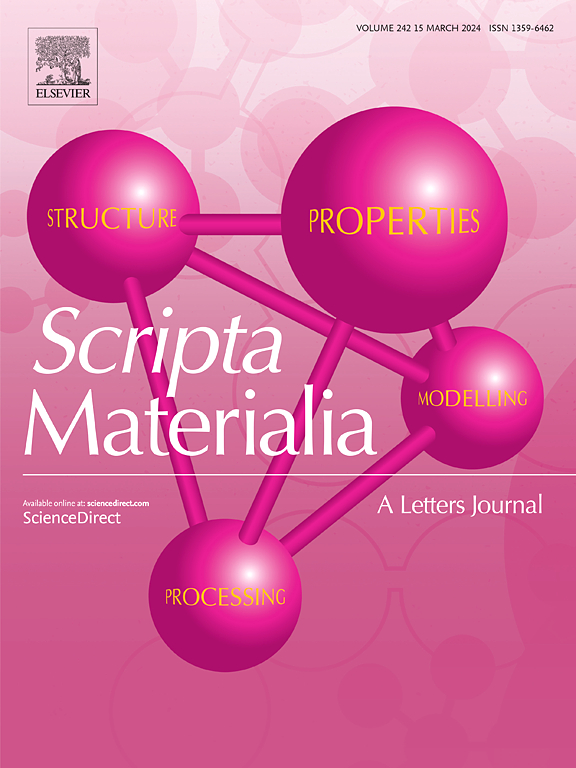Solid–state growth behaviour of phases in the Nb–Zn diffusion couple
IF 5.3
2区 材料科学
Q2 MATERIALS SCIENCE, MULTIDISCIPLINARY
引用次数: 0
Abstract
Nb–Zn system, which is technologically crucial for galvanized Nb–containing interstitial–free steels, is studied using diffusion–bonding. It also involves solid–state joining of dissimilar metals, viz. Nb/Zn, with high difference in melting points. In Nb/Zn diffusion couple, NbZn3 and NbZn16 grow at 400°C. NbZn7, present between NbZn3 and NbZn16 in phase diagram, could not be detected. This phenomenon is discussed using the physico–chemical approach and existing nucleation theories. Algebraic expressions, unavailable earlier, are developed to calculate the driving force for diffusion in line compounds. They signify a correlation of the driving forces with a difference in slopes of common tangents. Diffusion parameters such as integrated and tracer diffusivities, which are currently unavailable, are also estimated. The estimated tracer diffusivities indicate that Zn diffuses faster than Nb via NbZn16. This can be understood from the crystal structure of NbZn16 and possible defects in this phase.
Nb-Zn扩散对中相的固相生长行为
采用扩散键合的方法研究了对含铌无间隙钢镀锌至关重要的Nb-Zn体系。它还涉及熔点差异很大的不同金属(即Nb/Zn)的固态连接。在Nb/Zn扩散偶中,NbZn3和NbZn16在400℃下生长。NbZn7在相图中处于NbZn3和NbZn16之间,未被检测到。用物理化学方法和现有的成核理论对这一现象进行了讨论。代数表达式,以前不可用,发展计算驱动力的扩散在线化合物。它们表示驱动力与公切线斜率的差异之间的相关性。还估计了目前无法获得的扩散参数,如积分扩散系数和示踪扩散系数。估计的示踪剂扩散系数表明,Zn通过NbZn16扩散的速度比Nb快。这可以从NbZn16的晶体结构和该相中可能存在的缺陷来理解。
本文章由计算机程序翻译,如有差异,请以英文原文为准。
求助全文
约1分钟内获得全文
求助全文
来源期刊

Scripta Materialia
工程技术-材料科学:综合
CiteScore
11.40
自引率
5.00%
发文量
581
审稿时长
34 days
期刊介绍:
Scripta Materialia is a LETTERS journal of Acta Materialia, providing a forum for the rapid publication of short communications on the relationship between the structure and the properties of inorganic materials. The emphasis is on originality rather than incremental research. Short reports on the development of materials with novel or substantially improved properties are also welcomed. Emphasis is on either the functional or mechanical behavior of metals, ceramics and semiconductors at all length scales.
 求助内容:
求助内容: 应助结果提醒方式:
应助结果提醒方式:


